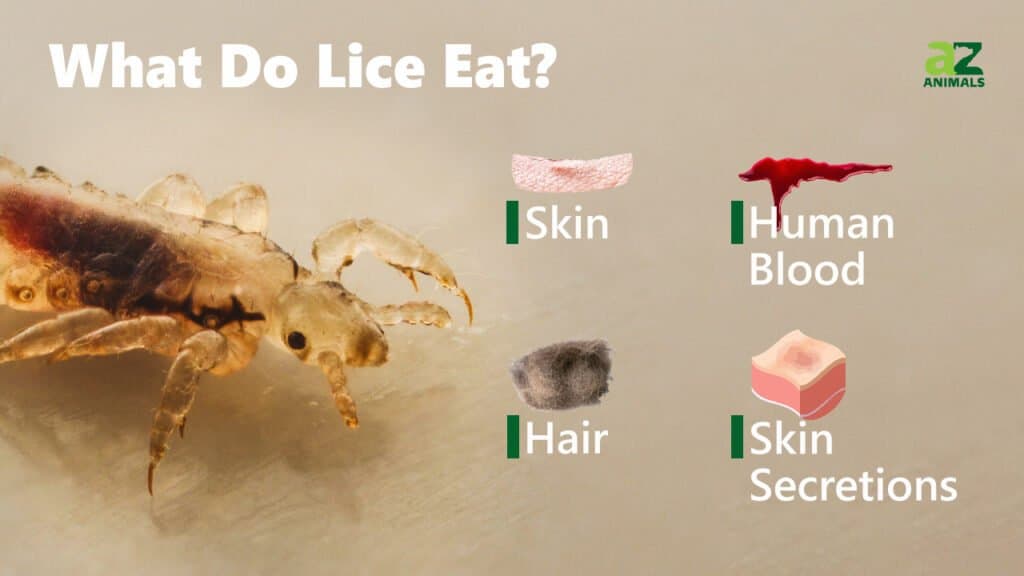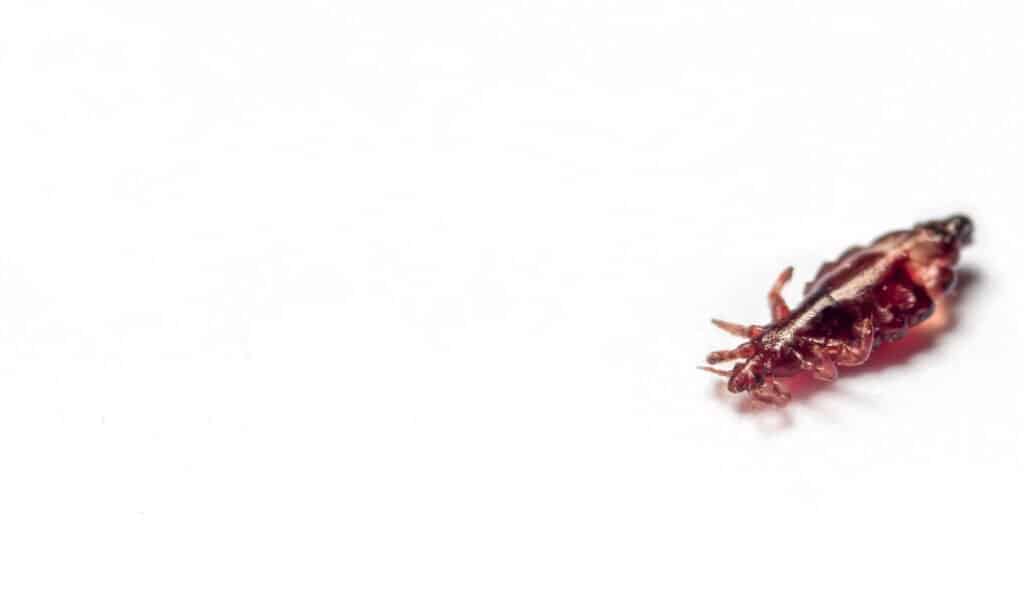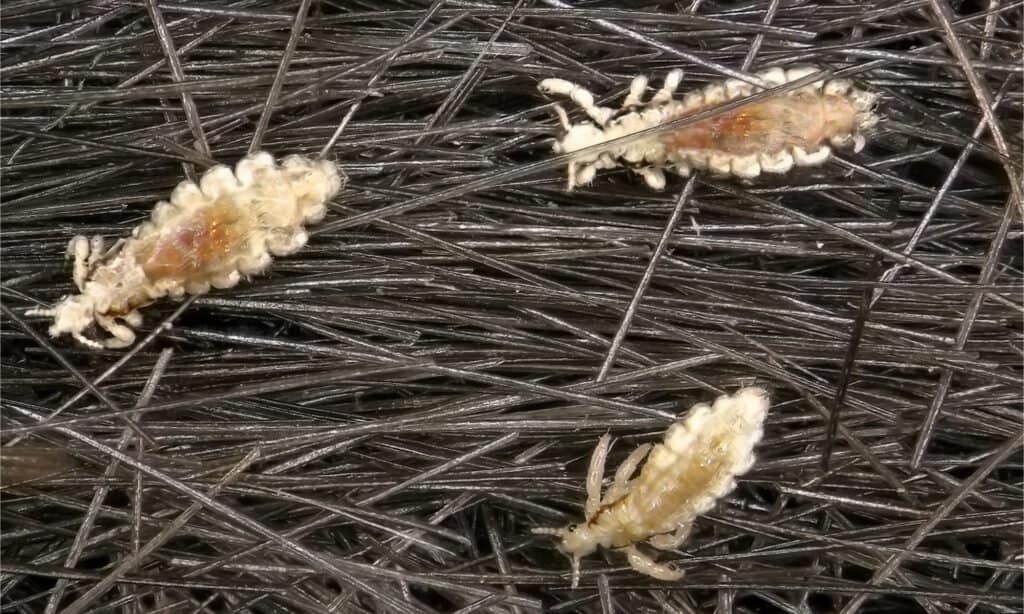Lice are tiny parasitic insects that live in the hair or feathers of animals and people. They have six claws and no wings. Thus, they cannot hop or fly; they crawl instead. Lice are categorized into three types: body, pubic or crab, and head lice. Crab lice live on the skin and coarse hairs within the genital areas.
Body lice live on beddings and clothing used by infested people. Head lice can be found in people’s hairs, eyebrows, and eyelashes.
Lice can multiply quickly. A female louse lays up to eight to ten eggs per day. The eggs hatch into nymphs and mature into adults in 20 days. Adult lice can live up to 30 days in a suitable environment with minimal disturbances. They need to eat several times per day, or they will die of hunger within 1 to 2 days.
Lice bites cause itchiness and tingling of the scalp as they move around in people’s heads and bodies. Fortunately, lice are harmless since they don’t spread any diseases, but you’ll have some trouble sleeping because they are very active at night.
According to Phytochemistry Reviews, millions of people globally get head lice every year. Lice often cause you lots of discomfort while they are enjoying their meal.
So, let’s find out what lice eat for growth, reproduction, health, and good condition.
What Do Lice Eat?

Lice eat a diet that consists of human blood to survive. The most prevalent of all is the head lice. Infestation with head lice in the United States is common with the pre-school children together with their households.
Head lice live on the human scalp and feed right on the head. This is why people usually assume that they eat whatever they find on the head, including the hair and dandruff. This is not true. Head lice don’t eat scalps and hair. They rely on human blood as their sole source of food.
On the other hand, body lice live on bedding and clothing used by an infested person. They are parasites that lay their eggs on bedding (which is how they multiply) and move to human skin to feed on blood.
How Do Lice Obtain Their Food?

Head lice attach themselves to hair strands with the help of their hook-like claws.
©Dmitry Bezrukov/Shutterstock.com
Head lice attach themselves to hair strands using their hook-like claws. They then climb down to the scalp, where they will move around in search of a blood vessel to pierce. Once they find a suitable vein, head lice pierce the skin using their mouth and begin to suck the blood.
Head lice add saliva to the wound while eating to prevent the blood from coagulating. They have two pumps on their heads, which take in blood. You can see blood as it’s being taken in from the mouth up to the stomach because lice have a translucent appearance. That’s why lice that have recently fed on blood appear darker than those who haven’t eaten anything.
On the other hand, body lice only move to the skin whenever they want to eat. Body lice spend most of their time on beddings and clothing.
What Attracts Lice to Humans?
Lice are attracted to the blood and warmth that they will get from humans. Body lice is often a sign of unclean beddings and clothes. Unlike body lice, a head lice infestation is not a sign of poor hygiene. They are very contagious and can be spread through close contact with people. That’s why you find that children are the most affected by head lice.
Head-to-head contact is widespread in schools during sporting activities and camping. Head lice can also be transmitted through sharing of clothes and beds, though not common like body lice.
How Much Do Lice Eat?

Lice suck human blood about 5 times a day.
©Protasov AN/Shutterstock.com
Lice suck on human blood 4 to 5 times a day. They also feed during the night. Based on a study published in the International Journal of Dermatology, an adult female louse drinks around 0.0001579 ml of blood per single feed.
The adult male louse takes about 0.0000657 ml of blood, while the nymph consumes up to 0.0000387 ml of blood in a single feed.
Who Competes With Lice for Food?
Lice are not the only insects that suck human blood. Here’s a list of six other blood-sucking insects:
- Mosquito
- Flea
- Bed bugs
- Black fly (Simuliidae)
- Mange mites
- Chiggers
All these insects have the same desire as lice. They have an absolute need for blood-feeding to survive. Yet, adult chiggers cannot survive on human blood. They usually die after biting people. Contrary to adult chiggers, young chiggers require the lymph or blood of a living host for growth.
How Does the Diet of Lice Impact Other Species?
Lice don’t play a significant role in an ecosystem. They don’t bring any joy to our lives as other animals and plants do. Even the thought of lice is enough to make you itch. They cause severe irritation and itching. Children often scratch themselves until they bleed due to the burning sensation. Farm animals react to their bite by vigorously scrubbing, chewing, and licking themselves. This lowers milk production in cattle and goats because they focus on their discomfort rather than eating.
What Eats Lice?
Non-human primates like monkeys eat lice as this is part of their grooming process, and they will eat whatever insect they come across. Non-human primates are experts in lice-picking and will pull all the lice off their bodies while eating them one by one.
Remember that story of Binti Jua, a female gorilla who saved the life of a kid who fell in Brookfield Zoo back in 1996? The gorilla was so nice to the baby that she even started pulling lice from the baby’s scalp.
Ladybugs and other birds also eat lice. A ladybug may consume up to 100 lice in a day.
What Do Baby Lice Eat?
Baby lice or nymphs also eat tiny amounts of blood like their parents for nourishment. They drink blood several times a day to boost growth. They look exactly like adult lice but smaller in appearance. Nymphs mature around 9-12 days after they hatch.
Final Thoughts on What Lice Eat
What lice eat leads us to one definite conclusion – they feed on blood! So, how can we prevent lice bites? Lice infestation can happen to anyone regardless of age, sex, or class. Apart from improving our hygiene, we should also reduce overcrowding and sharing of personal items, especially at schools.
There is no need to be embarrassed if you or your child are infested by head lice because there is no link between poor hygiene and head lice. You can use a special conditioner or a coconut-scented shampoo to repel head lice.
The photo featured at the top of this post is © devil79sd/Shutterstock.com
Thank you for reading! Have some feedback for us? Contact the AZ Animals editorial team.






